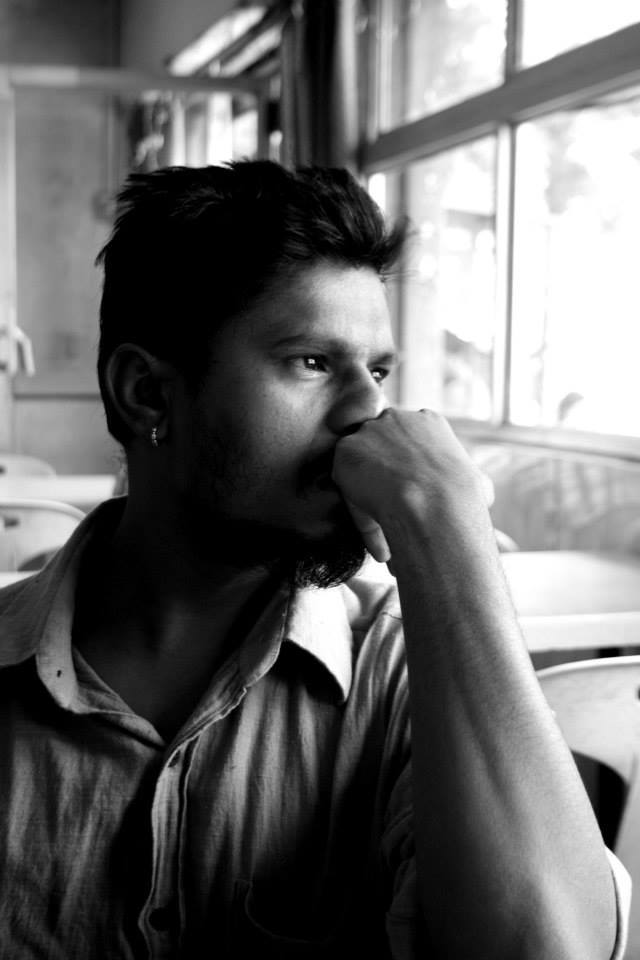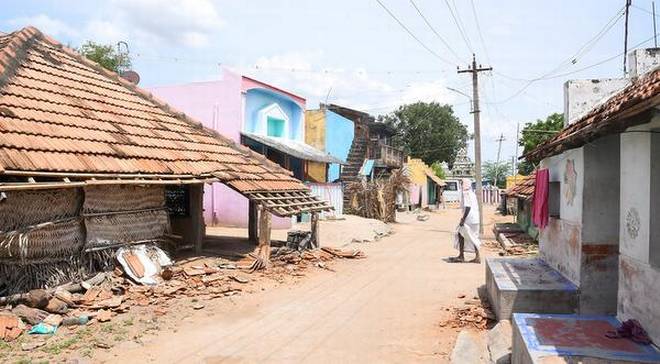Yogesh Maitreya
 As part of my fieldwork, I had been assigned to spend a year studying one of the prisons in Mumbai. To study the criminal justice system more closely and to know its nuances, I had to attend court trials, visit police stations and localities where mostly Dalit-Bahujans reside. Wherever I went, I came across a very grim picture. After discussing cases with experts, I often found that charges against most victims were wrongly filed. The lack of a detailed enquiry before putting socially marginalised sections into prisons was a common feature. Many young people found themselves rotting in the confinement of prisons on minor pretexts, sometimes just on the basis of some doubt.
As part of my fieldwork, I had been assigned to spend a year studying one of the prisons in Mumbai. To study the criminal justice system more closely and to know its nuances, I had to attend court trials, visit police stations and localities where mostly Dalit-Bahujans reside. Wherever I went, I came across a very grim picture. After discussing cases with experts, I often found that charges against most victims were wrongly filed. The lack of a detailed enquiry before putting socially marginalised sections into prisons was a common feature. Many young people found themselves rotting in the confinement of prisons on minor pretexts, sometimes just on the basis of some doubt.
Though provisions exist for accessing judicial help, it is difficult for an accused/victim even to communicate with family and friends, let alone the question of finding any judicial help. Whenever I visited courts and courtrooms I found the atmosphere hopeless. The laxity in handling the cases was quite apparent. What was wrong? I did not know then. Treading through court corridors, I used to observe the names of judges by the name plates hung before their rooms. It wasn’t surprising to see that all the judges were upper castes, specifically Brahmins. How does this fact contribute to what happens inside the courtrooms? What does this overwhelming presence of brahmins in judiciary do to the ensuring of justice?
Although the analysis of this phenomenon is beyond the scope of this article, yet the recently released movie ‘Court’, directed by the upper caste filmmaker Chaitanya Tamhane, can serve as a important example to delve into this issue. The movie reminded me, yet again, about not only what is wrong with the judiciary but also the problems of the Brahmin agency when they handle Dalit-Bahujan subjects through their gaze. This positioning of the Dalit-Bahujan subject is intended to create an impression that the brahmins are trying to do justice to Dalit-Bahujan grievances, but in reality, it conceals the crucial fact that there are vast differences and contradictions between Dalit epistemology and brahmin epistemology. The core reason for this is the brahmins’ casteist consciousness when it intervenes in Dalit-Bahujan lives and issues.
There isn’t anything new in what Tamhane has depicted in his movie. But it is surprising how cleverly he has created an impression that court as a structure, as an institution, is a wrongly perceived idea or a faulty mechanism or is a mechanism whose faults are embedded in people who run it. But what about the caste of the people running it? What about the caste i.e. Brahmins, who dominate the entire domain of judiciary? And as importantly, what about the caste of the director who extracts further capital by exploiting such issues? He does all this without giving us a single clue that caste has the greatest role to decide who can get justice and who can’t.
The movie ‘Court’ at its outset creates the impression that it would deal with the subject sensitively. Yet, if one were to analyse it closely, it is the same brahminical propaganda trying to maintain the balance of brahmin-power and their shameless hegemony. Hence, we notice two sets of Brahmins – one set who support all sorts of fascist notions and another which set attacks them, even criticises them, or worse still, they ‘take the trouble’ to introduce Dalits‘ structural experiences as Arundhati Roy notoriously and blatantly did.
In this movie, the upper caste director forgets and deliberately neglects the importance of the narratives of manual scavengers themselves. So how can a movie called ‘Court’ made by an upper caste guy, inspired by two Brahmins – S.Anand and Anand Patwardhan (as admitted by Mr. Tamhane) – understand the inner world of a Dalit-Bahujan character around which the movie claims to revolve? Moreover, the movie fails to show the real problems of the judicial processes in the Indian courts where caste plays the most powerful role, where the presence of brahmin judges can be calculated to be more than 90%, sometimes, where judges pass ridiculous judgements (some of which I have read myself) often because they not only lack sensitivity but more importantly because they lack the necessary empiricism of the lives to which they listen to daily in court. The movie cleverly drags away our attention from the semiotics of caste to ‘court’ as a faulty structure. Over populated by Brahmins, caste plays one of the most, if not the most, crucial role in the court procedures in India. The movie fails to give this grave problem any serious attention.

Apart from being appreciated by various brahminical media, the movie has also generated some curiosity among Dalit-Bahujans. But looking at it through the Dalit location, the movie seems to disappoint if we take several aspects into consideration, from the caste location of the director to the issue he is depicting. When a tiny community of Brahmins dominates all the power-structures of Indian society, including making movies, the fusion of Brahminism into these structures would be an obvious observation for those of us who share an anti-caste ideology. How can then these movies be called secular? Why cannot we say that brahmin-made movies on Dalit-Bahujan imagery are prejudiced? Why we are forced to appreciate their movies only because their own casteist media appreciates them? Isn’t it Brahminism yet again? Do you even care about manual scavengers apart from making their lives a part of your movie and then flying to foreign countries and accumulating further capital exploiting their lives?
The movie gives us an impression about the gap between the life which lawyers live inside and outside the court. This gap has much to do with the demarcations of caste locations which the movie conceals in its technical treatment. The lives of the two lawyers in the movie, one an elite/upper caste Gujarati and the other a Maharashtrian woman, an ‘ideal’ woman at home and who is fond of watching plays which propagate fascist thoughts, are two prime examples of how we share a different national consciousness. Then how can we expect justice from them when they do not have any idea of the life which the Dalit-Bahujan are made to live in this country? This very contradiction is very meticulously manipulated by the director. At this juncture, we could ask: when we talk about any institution in India, can we afford to talk about it without mentioning Brahmins, especially when they outnumber all other communities in terms of representation?
At a personal level, I do not care how ‘exactly’ the movie depicts the system. The observation of the Brahmin director is only superficial. The Dalit-Bahujan members who are associated with the movie are promoting it within India and are a source of pride for only the Dalit-Bahujan population, while the brahmin director of the movie is flying to all foreign countries and discussing how his brahmin fellows have inspired him to make the movie, all the while zipping his lips on the ugliness of caste which haunts the judiciary and judicial procedures. Isn’t this caste in action?
Also, the Brahmin director of the movie forgets to elaborate that the suicide of the manual scavenger in the movie as they claimed, was actually an atrocity, a structural violence originating from Brahminism. Is this omission also inspired by his fellow Brahmins? How could he forget the shameful fact that there is no Brahmin in the manual scavenging department of the Municipal Corporation? Why did he not mention this reality, whereas he has shown the pub-life, drinking activities, enjoyment of fascist plays by lawyers in the movie which seem irrelevant to the core issue? To understand this, one must consider the fact that, not just Bollywood, but even Marathi film industry is dominated by Brahmins and upper castes in terms of representation; and they seem to control all aspects of filmmaking including distribution and promotional activities.
Appropriation of Dalit-Bahujan subjects and imagination is not a new thing. So when a Brahmin claims to make a good movie, which has already won several international awards, one must think twice before praising it uncritically, one must reflect on the caste of makers of the movies, and what they make. This would uncover the treachery of Brahminism, because so far these movies in India are largely made by brahmin/upper caste directors who ensure that the existence of caste discrimination must be silenced and should not be portrayed either explicitly or implicitly. This is how they control the discourse of and over caste issues much like Brahmin academics do.
Cinema being a visual art is a powerful medium to propagate any notion, ideology, and trend or fashion statement. Since upper castes and brahmins have continued to dominate this movie-making business which they call the film industry, they have cleverly managed to eradicate the fact that brahmins are appropriating Dalit-Bahujan narratives and channelizing caste discrimination through various means- be it through mainstream cinema or what they call parallel cinema. They project these two kinds of cinema as contradictory but they together, in fact, constitute a continuum of their hegemony.
It is easy to change or let’s say conceal caste locations, especially by upper caste artists when they deal with Dalit-Bahujan issues since caste is not a physical attribute but has existential structural trajectories. Imagine a white person making a movie on the wrong trials of blacks, shootouts, the courts and their procedures, without mentioning prejudices which whites harbour about blacks. Imagine that this white director were to claim that he understands the black empiricism and did much research on it. Imagine that this white person just sheds off his whiteness while making films which would talk about prejudices of whites about black people. Can that happen? Well, a white person cannot claim he is black or he would be called a lunatic.
But in India, Brahmins – those who do research on Dalit-Bahujan subjects, lives and their problems without considering how filthy their Brahminism is and how it is consolidating the problems rather than solving them – can often claim castelessness, furtively, or let’s say, cunningly hide their caste and still talk about problems which originate from the structure of caste itself. Here, caste which has different aspects and is structural, cannot be easily recognised when it is creating new grounds for further oppression. This is the reason Brahmins shamelessly claim to be anything that suits their convenience, and try to fool people. This is why the last scene in the movie ‘Court’, when a brahmin judge slaps a dumb boy, should not be mistakenly understood as the judiciary, a democratic system, slapping the common man. The very imperatives of the scene are that a Brahmin is slapping the Dalit-Bahujan population of this country and conscripting them into criminal acts.
It is clear that Brahmins need someone from their own community to show dissent towards Brahminism, otherwise it would be termed some extremist project. The project of Brahmin hegemony is thus balanced, and Brahmins know very well that it should be balanced otherwise it could be decoded easily by those who stand at the other end of society. So Brahmins make movies on Dalit-Bahujan issues which illustrate how they also share similar feelings of dissent towards Brahminism, but in this clever process they cling to all their privileges and make sure that Dalit-Bahujan cannot acquire the same. This can be seen in the different ‘markets’ for which the Dalit-Bahujan crew is used and for which market the brahmin director ensures his domination. In the end it is to give an idea to the people that these are Brahmins who are sensitive about the Dalit-Bahujan communities and are almost some kind of saviours. This is how Brahmins have been appropriating the world of Dalit-Bahujans and trying to erode our culture.
~~~
Yogesh says:
My name is Yogesh Maitreya. I am from Nagpur. I am doing my M.A in Criminology and Justice (2013-15) from TISS (Tata Institute of Social Sciences, Mumbai).
Cartoon by Unnamati Syama Sundar.










